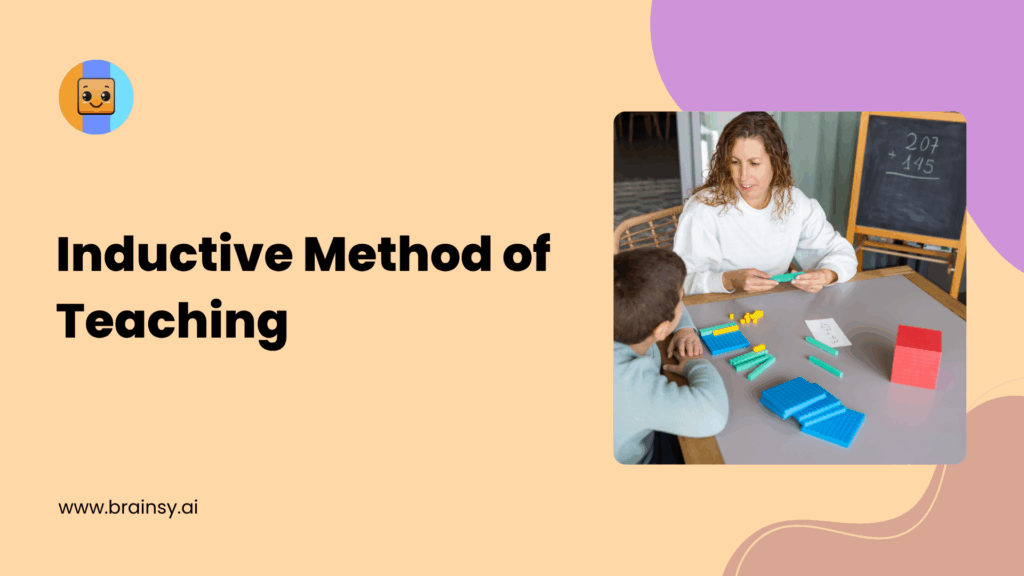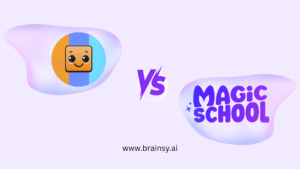Introduction to the Inductive Method of Teaching
The lecture teaching method is not limited to academic settings and finds wide applications in various real-world scenarios. In professional environments, lectures are commonly used for training sessions, seminars, and workshops, where employees are introduced to new concepts or skills.
In the corporate world, giving a lecture is used to communicate company policies, procedures, and strategies to a large audience. It can be an effective way to onboard new employees, ensuring they understand the organization’s culture and expectations.
Additionally, lectures play a significant role in conferences and symposiums, where experts present their research findings or industry insights to peers and stakeholders. These events often combine lectures with interactive sessions, fostering a collaborative learning environment.
lecture method is also utilized in community education programs, where experts or educators provide information on various topics to the public. This can include health education, financial literacy, or environmental awareness, helping to inform and empower communities.
Defining the Inductive Method of Teaching
To define the inductive teaching method, it is essential to understand its core principle: learning through observation and pattern recognition. This method involves presenting students with specific examples, from which they can generalize rules or concepts. Unlike traditional methods where facts are provided upfront, inductive learning encourages discovery learning and exploration.
Inductive teaching hinges on the idea that understanding is constructed by learners themselves. This student-centered approach contrasts with deductive teaching, where information is delivered directly by the teacher, followed by examples to reinforce the concept. By allowing students to explore and identify patterns, inductive learning fosters deeper engagement and retention of knowledge.
In essence, inductive methods emphasize experiential learning and inquiry learning. They encourage students to ask questions, explore possibilities, and develop a personal connection to the material. This approach not only enhances comprehension but also cultivates lifelong learning skills, making it a valuable strategy in modern education.
Key Differences Between Inductive and Deductive Methods
Understanding the difference between inductive and deductive methods is crucial for educators seeking to employ effective teaching strategies. The primary distinction lies in the sequence of instruction and the role of the learner in the knowledge acquisition process.
- Sequence of Instruction:
- Inductive Approach: Begins with specific examples or observations and progresses towards general principles. Students first encounter instances and then derive broader concepts.
- Deductive Teaching: Starts with a general rule or principle, followed by specific examples to illustrate and reinforce the concept.
- Role of the Learner:
- Inductive Approach: Encourages active participation and exploration. Students are responsible for identifying patterns and drawing conclusions, promoting critical thinking skills and student autonomy.
- Deductive Teaching: Involves a more passive role, where students receive information from the teacher and apply it to given problems.
- Outcome Focus:
- Inductive Teaching: Emphasizes the discovery process and critical thinking.
- Deductive Teaching: Focuses on the application of pre-determined rules and principles.
These differences highlight the complementary nature of both methods. While inductive teaching fosters creativity and exploration, the deductive method ensures clarity and structure. By understanding these distinctions, educators can choose the appropriate method based on learning outcomes and student needs.
Advantages of the Inductive Method of Teaching
Inductive teaching offers numerous advantages that can significantly enhance the educational experience. One of its primary benefits is the development of problem-solving skills and analytical thinking. By engaging students in the process of discovery, this method encourages them to analyze information, identify patterns, and draw conclusions independently.
Moreover, inductive teaching promotes active learning and skill development. Students actively participate in their education, leading to increased engagement and motivation to learn. This approach transforms the classroom into a dynamic environment where students explore and interact with the content, fostering a deeper understanding and retention of knowledge.
Additionally, inductive techniques cater to diverse learning styles. By involving various learning activities such as discussions, experiments, and problem-based learning, it accommodates different preferences and strengths. This inclusivity ensures that all students have the opportunity to succeed and thrive in their learning journey, contributing to overall intellectual development.
Disadvantages of the Inductive Method of Teaching
Furthermore, inductive teaching requires careful planning and guidance from educators. Teachers must facilitate the learning process without directly providing answers, which can be challenging, especially in larger classrooms. This demands a high level of expertise in classroom management and instructional design. Assessment methods may also need to be adapted to evaluate the effectiveness of inductive approaches and measure student performance accurately. Additionally, incorporating AI tools for students can support personalized learning and help track progress more efficiently.
Furthermore, inductive teaching requires careful planning and guidance from educators. Teachers must facilitate the learning process without directly providing answers, which can be challenging, especially in larger classrooms. This demands a high level of expertise in classroom management and instructional design. Assessment methods may also need to be adapted to evaluate the effectiveness of inductive approaches and measure student performance accurately.
Lastly, not all content is suitable for inductive methods. Certain subjects or topics may require direct instruction to ensure clarity and understanding. In such cases, a hybrid approach that combines both inductive and deductive methods may be more effective, allowing educators to capitalize on the strengths of each approach while maintaining positive classroom dynamics.
Examples of Inductive Method in Teaching Mathematics
Inductive teaching is particularly effective in teaching mathematics, where pattern recognition and logical reasoning are crucial. Here are some examples of how this method can be applied:
- Pattern Recognition:
- Students explore number sequences, such as the Fibonacci sequence, to identify patterns and derive formulas.
- By analyzing geometric shapes and their properties, students can generalize concepts about angles and symmetry.
- Problem Solving:
- Through real-world scenarios and project-based learning, students apply mathematical concepts to solve authentic problems, encouraging them to formulate their own strategies.
- Activities like investigating the principles of probability through experiments help students understand the underlying rules.
- Conceptual Understanding:
- Students engage in hands-on activities to discover the relationships between algebraic expressions and equations.
- By manipulating objects and visual aids, students can grasp abstract concepts like fractions and ratios.
These examples illustrate how inductive teaching can make mathematics more accessible and engaging, encouraging students to develop a deeper appreciation for the subject. The scientific method often aligns with this approach, allowing students to form hypotheses and test them through guided inquiry and experimentation.
Examples of Inductive and Deductive Methods of Teaching
To further illustrate the application of both methods, consider the following examples:
Inductive Method
- Science Exploration: Students conduct experiments to observe chemical reactions, leading to the formulation of hypotheses and scientific principles.
- Language Arts: Through reading diverse texts, students identify themes and motifs, culminating in the development of literary analysis skills.
Deductive Method
- History Lessons: Teachers present key historical events and timelines, and students apply this knowledge to analyze historical significance.
- Grammar Instruction: Students learn grammar rules and apply them in exercises to reinforce language structure and usage.
These examples demonstrate the versatility of both methods and their ability to complement one another in a comprehensive educational framework.
Teaching Mathematics: Inductive vs. Deductive Approaches
When teaching mathematics, choosing between inductive and deductive approaches depends on the learning objectives and the complexity of the topic. Each method has its strengths, and understanding these can help educators make informed decisions.
Inductive Approach
- Strengths: Encourages exploration, fosters critical thinking, and aids in conceptual understanding.
- Application: Suitable for introducing new concepts, exploring patterns, and engaging students in discovery-based learning.
Deductive Approach
- Strengths: Provides structure, ensures clarity, and reinforces understanding through practice.
- Application: Ideal for reviewing known concepts, practicing skills, and ensuring mastery of foundational principles.
By combining both approaches, educators can provide a balanced and effective mathematics curriculum that caters to diverse learning needs. Scaffolding can be particularly useful in inductive teaching, guiding students through the discovery process while allowing for differentiated instruction based on individual student needs and prior knowledge.
Practical Applications of the Inductive Method in the Classroom
Implementing inductive teaching in the classroom involves creating a learning environment that encourages exploration and discovery. Here are some practical strategies for educators:
- Inquiry-Based Learning
- Pose open-ended questions that prompt students to investigate and explore.
- Design activities that require students to gather data, analyze results, and draw conclusions.
- Collaborative Projects:
- Encourage group work where students collaborate to solve problems and share insights, developing teamwork skills.
- Facilitate discussions that allow students to articulate their thought processes and learn from peers.
- Reflective Practices
- Incorporate reflective journals where students document their learning experiences and insights, enhancing metacognitive skills.
- Provide opportunities for students to present their findings and engage in peer feedback.
These strategies not only enhance the effectiveness of inductive teaching but also create a vibrant and interactive learning environment. By focusing on student engagement and collaborative learning, educators can foster a more dynamic and participatory classroom experience, even in online teaching settings.
Conclusion
In conclusion, inductive teaching offers a dynamic and engaging approach to education, fostering critical thinking, active learning, and a deeper understanding of concepts. While it presents certain challenges, its benefits far outweigh the drawbacks, making it a valuable strategy in modern classrooms.
By embracing inductive teaching methods, educators empower students to become active participants in their learning journey, equipping them with professional skills that transcend the classroom. As we continue to explore innovative teaching strategies, inductive methods remain a cornerstone of effective education, unlocking the potential for meaningful and transformative learning experiences.
If you’re an educator looking to incorporate inductive teaching into your practice, consider starting with small, manageable activities that encourage exploration and discovery. Over time, you can expand these strategies to create a more comprehensive and engaging learning environment for your students. This approach aligns with current trends in educational psychology and supports student-centered learning.
Professional development opportunities can help teachers refine their inductive teaching skills and stay updated on best practices. By investing in these methods and using free teacher tools, educators can contribute to ongoing innovation in education and help students achieve better academic and educational outcomes.
Let’s transform education together—one discovery at a time and pave the way for deeper learning experiences that prepare students for the challenges of the future.






